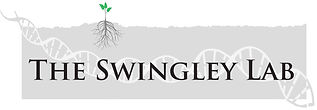
HYPERALKALINE WASTES
The extreme limits of life
Project Description
Alkalitolerant and alkaliphilic microorganisms have been described from a variety of environments worldwide; however, alkaliphilic metabolism and environmental adaptation have not been characterized to the same depth as their acidophilic counterparts. Work in my lab focuses on closing this gap in knowledge by characterizing microbial communities from the Calumet wetlands (87°36’W, 41°41’N), an alkaline wasteland just blocks from low-income, South Chicago neighborhoods. The Calumet region was historically a metal slag dumping site that has been polluted with heavy metal and, at a pH typically above 13, is one of the most alkaline places on Earth (Roadcap et al., 2004). Similarities between this anthropogenic wasteland and serpentinizing systems, where deep, ultramafic rocks are exposed to water, may provide clues to alkaline survival on Earth and in similar systems on Mars, Enceladus, Europa, or elsewhere in our galaxy.
Ribosomal and metagenomic surveys at Calumet have revealed communities that are relatively simple in composition, with a number of microbial clades in common with serpentinizing systems (Ohlsson et al., In prep; Osvatic et al., In prep). Among these is a cosmopolitan Betaproteobacterium that is found in very high abundance in aerobic communities in nearly all of these hyperalkaline freshwater systems, which has recently been proposed as a novel alkaliphilic genus, dubbed Serpentimonas (Suzuki et al., 2013). While it is still unclear how members of this genus tolerate the extremely high pH in these environments, they are likely competitive due to their ability to utilize the abundant hydrogen and carbon dioxide present in these systems, and has even been suggested to utilize the calcium carbonate that rapidly precipitates due to the high pH, which would be a unique and advantageous adaptation. Further analysis of these organisms in my lab and elsewhere will help elucidate how this organism and other alkaliphiles might survive at such an extreme pH.
Deeper within the anaerobic calcite precipitates in Calumet waters, we discovered microbial communities that appear unique to this anthropogenic hyperalkaline environment (Osvatic et al., In prep). Thus far we have identified numerous novel taxa in these deep sediments, including unique members of very well-described phyla such as the Firmicutes and Bacteroidetes and even deeper branching clades that may represent completely new phyla. Current assembly of genomes from metagenomic sequence data has aimed at characterizing metabolic pathways and alkaline tolerance in more abundant environmental taxa, but this analysis is expected to expand profoundly with newly-acquired metagenomes as part of the aforementioned microbial dark matter project through Bigelow Labs and the JGI. With the greatly increased depth of sequence coverage, we anticipate assembly of less abundant alkaliphilic dark matter clades that may profoundly impact our understanding of hyperalkaline or serpentinizing sites as origin of life hotspots.
Relevant Publications
Coming soon!

